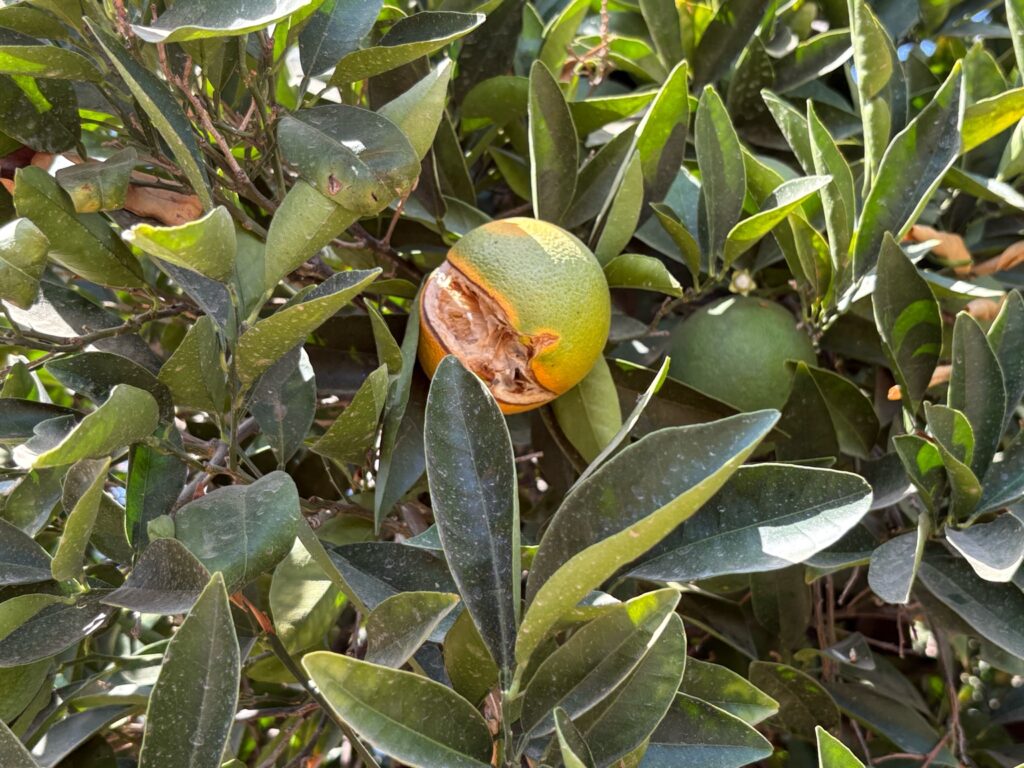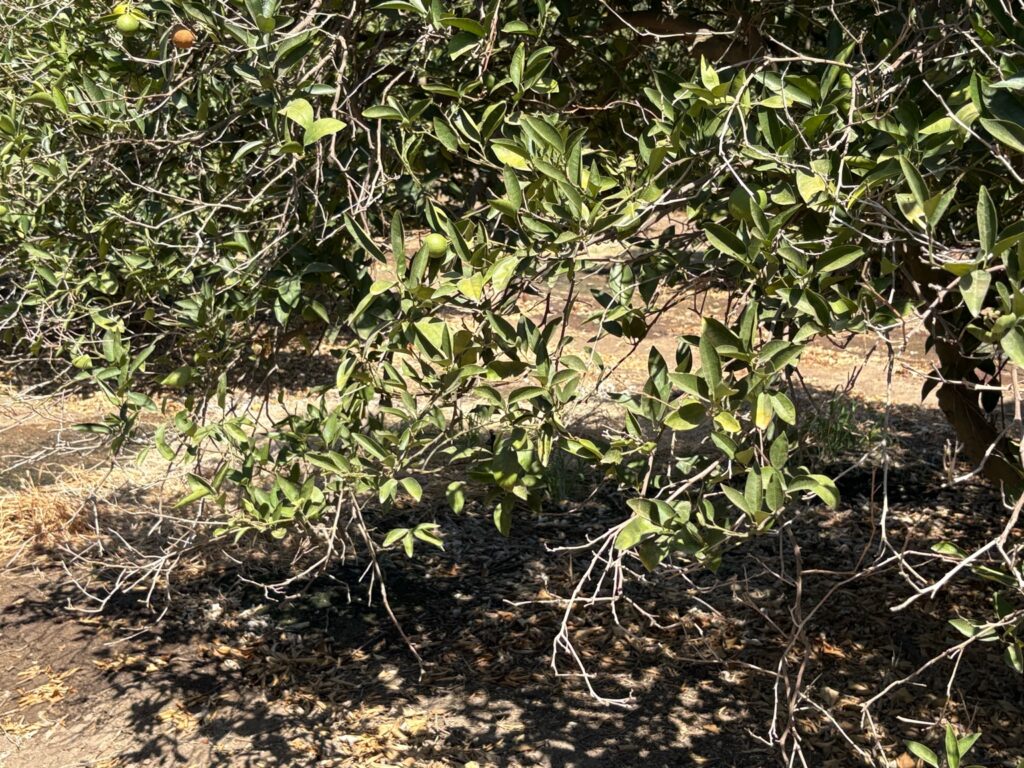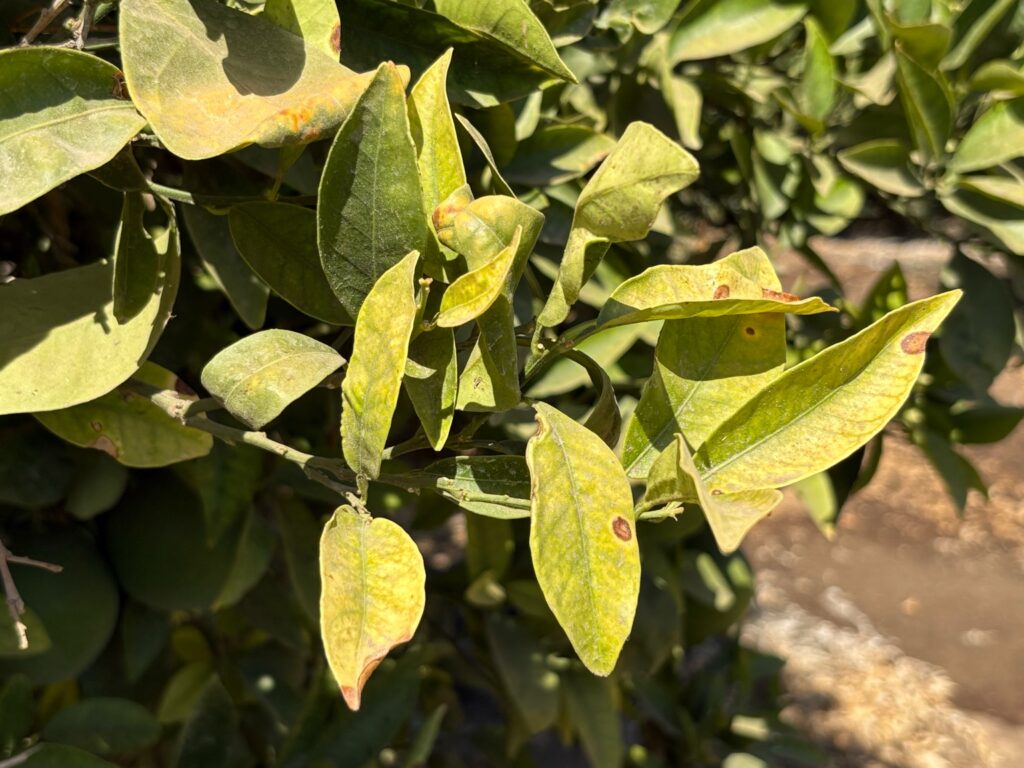
We are starting a new field trial near Terra Bella, CA. Here’s what we know and what we want to do about it. The grower states his well water has high Boron levels, and over the years the symptoms in the orchard have worsened (see pics). Signs include poor fruit set/sizing, split fruit, increased dry wood and deteriorating canopy, and yellowing leaves. (There’s a bit of a thrip issue, too, but we’ve got to focus on the plant nutrition first.)

We will start with an application this month using 3oz of Manda per acre to hopefully kickstart some regeneration. We suspect there’s significant root deterioration that’s allowing excessive Boron to enter the plant. We know from our earlier citrus trial that Manda can increase nutrient uptake and translocation, particularly Calcium, Magnesium, and Manganese. If we can improve Calcium uptake, we can spur the growth of new, healthy roots and perhaps begin to heal some of the damage. Calcium will strengthen cell structure which, in turn, will help the plant regulate its Boron intake.
In terms of field outcomes, we anticipate we can get the canopy growing healthy again. The Calcium improvement should also help with the fruit splitting issue. Manda usually has an impact on leaf color very quickly, indicating improvements in Nitrogen, Potassium and micronutrient (Magnesium, Manganese) use.

What will we measure? We will take analyze leaf samples before and after each application much like our Quesada citrus trial earlier this year. Also, instead of measuring random fruits for size changes, we have tagged several individual fruits to monitor their specific journey. This will tell us without question whether we’re impacting size and/or the fruit splitting issue. Let us know if you have advice for this grower (or us!) or if you have questions. We enjoy putting Manda to the test, but it’s also a great opportunity to simply learn about Boron toxicity and how to combat it. It’s a common problem in the south Central Valley. Maybe we can help a few growers out with new information.

Stinky thrips.

No responses yet